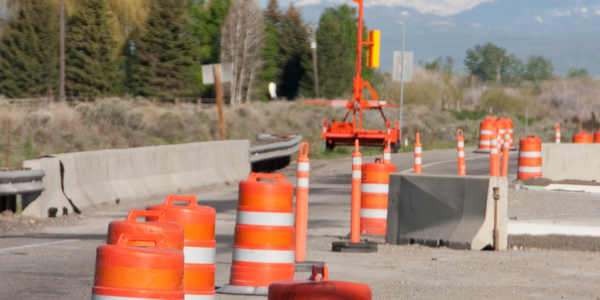Structural Health Monitoring

Structural health monitoring solutions ensure the safety and soundness of engineering structures such as a buildings and bridges. Structural health monitoring uses an assortment of sensors to collect and analyze data pertaining to any damage or deterioration that a structure may receive over the course of its life. The data that structural health monitoring systems acquire can help its users avoid structural failures and changes to the material and/or geometric properties of a structural system, including changes to the boundary conditions and system connectivity, which adversely affect the system's performance. The structural health monitoring process involves the observation of a system over time using periodically sampled response measurements from an array of sensors (often inertial accelerometers), the extraction of damage-sensitive features from these measurements, and the statistical analysis of these features to determine the current state of system health. For long term solutions, the output of this process is periodically updated information regarding the ability of the structure to perform its intended function in light of the inevitable aging and degradation resulting from operational environments. After extreme events, such as earthquakes or blast loading, health monitoring is used for rapid condition screening and aims to provide, in near real time, reliable information regarding the integrity of the structure.
- Transportation
- Construction & Buildings
- Equipment & Machinery
- Maintenance
The overall structural health monitoring market was valued at USD 1.24 billion in 2017 and is estimated to reach USD 3.38 billion by 2023, at a CAGR of 17.93% between 2018 and 2023.
Source: Markets and Markets
The global structural health monitoring market size is estimated to reach USD 4.34 billion by 2025.
Source: Grand View Research
Cost Savings: Early detection of structural defects or damage through SHM can prevent costly repairs or catastrophic failures, saving businesses significant expenses in maintenance and downtime.
Improved Safety: SHM helps ensure the safety of infrastructure and occupants by continuously monitoring for signs of deterioration or damage that could pose a risk.
Infrastructure Owners: Owners of bridges, buildings, dams, pipelines, and other structures benefit from SHM by ensuring the longevity, safety, and reliability of their assets.
Engineering Firms: Engineering firms specializing in structural analysis, design, and maintenance use SHM technologies to assess the health of structures, identify potential issues, and recommend appropriate remediation measures.
What is MEMS?
MEMS (Micro Electro Mechanical Systems) capacitive accelerometers are one of the technologies, which addresses the needs of SHM. Because of the flat amplitude and phase response over a large bandwidth, ruggedness and attractive SWAP characteristics MEMS technology enable the increasing use of vibration sensing for SHM.
MEMS accelerometers use capacitive coupling to detect the motion of a suspended proof mass in response to external acceleration. A fabrication process that we utilize “bakes” the MEMS at the very high temperatures. This fabrication design guarantees very good performance repeatability in both – the temperature and the time. Obtained capacitive MEMS devices will measure from very low frequencies (<<1Hz) to high frequencies.
How many types of sensors have been developed for SHM?
- Contact-based sensors (such as microelectromechanical sensors)
- Noncontact sensors (such as air-coupled sensors, vision sensors using cameras, wireless rechargeable sensor networks, and radar sensor networks)
Sensor Data: SHM systems collect data from various sensors, including accelerometers, strain gauges, displacement sensors, and temperature sensors, to monitor structural behavior and detect anomalies.
Environmental Data: Environmental data, such as temperature, humidity, wind speed, and seismic activity, are also collected to assess the impact of external factors on structural health.
What are the key challenges for structural health monitoring systems?
- It is not a commodity purchase: due to the engineering costs and lack of resource availability associated with incorporating a SHM system into a structure, many organizations opt to forego deploying one.
- Many structural health monitoring systems rely on point sensors, or sensors that obtain data about only one point, to monitor asset: using point sensors in SHM systems is limiting since these systems must use interpolation to simulation additional measurement locations.
- Data normalization: this is the process of separating changes in sensor output caused by damage and changes caused by varying environmental conditions. Since most SHM systems do not continuously monitor, it is difficult to normalize the data (especially when point sensors are used to collect the information).
What is the most important SHM Performance Requirement?
Resolution is the most important performance requirement for the sensors used for SHM application. Damage in a structure appears as a tiny variation at first, but it is amplified with the aging of the structure. A sensor with an excellent resolution will reveal a failure at the very early stages. Thus accomplishing high-performance monitoring of critical structures allows a significant optimization in its maintenance planning and, consequently, reduces the operating costs in a drastic way.
What are the most critical missions in SHM?
- Discovering how to determine damage-sensitive features
- How to extract information about them from the data measured by sensors, in order to detect damage or changes to systems
Case Studies.








